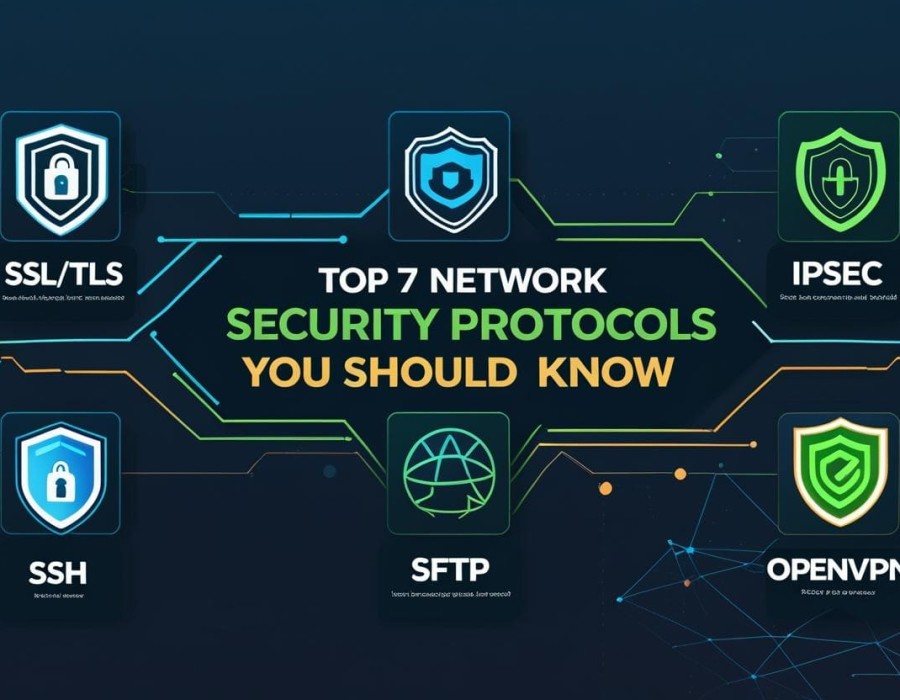What Are Security Protocols in Networking? A Beginner's Guide
With today's hyperconnected digital landscape, network security protocols are essential to protecting communication, maintaining confidentiality, and blocking unauthorized access to data. Whether you're just starting out in IT, a student of cybersecurity, or a professional looking to take network security training, learning security protocols is your journey's starting point to mastering digital defense.
In this UniNets guide, we will dissect the basics of security protocols in networking, touch on some highest-level security protocols, and demonstrate how higher-level courses—such as Palo Alto firewall training—can prepare you with practical cybersecurity skills.
What Are Security Protocols?
Security protocols are a collection of rules and standards applied to protect information sent over networks. Security protocols guarantee that the data exchanged between two devices (such as a user and a server) is private, authentic, and unchanged in transit.
From web browsing to email communication, file transfers to cloud interaction—security protocols are the pillars of digital trust.
Network Security Protocols Importance
The main function of network security protocols is to:
Encrypt data to avoid eavesdropping.
Verify users and devices.
Guarantee integrity so data isn't tampered with during transmission.
Avoid attacks such as spoofing, tampering, and man-in-the-middle (MITM) compromises.
Without such protocols, confidential data such as passwords, payment details, and personal information can be easily intercepted.
Network Security Protocols in Widespread Use
The following are some of the widely used security protocols you should familiarize yourself with:
1. SSL/TLS (Secure Sockets Layer / Transport Layer Security)
These protocols encrypt communication between web servers and browsers. TLS is the more secure, newer version of SSL.
2. IPSec (Internet Protocol Security)
Used to secure IP communications by authenticating and encrypting each packet in a data stream. IPSec is frequently utilized in VPNs.
3. HTTPS (Hypertext Transfer Protocol Secure)
Based on HTTP, this protocol utilizes SSL/TLS to secure web communications.
4. SSH (Secure Shell)
Used for safe remote access of devices and servers.
5. SFTP (Secure File Transfer Protocol)
An SSH extension to transfer files securely.
These are just a few. As you continue in your network security classes, you will learn about many more protocols utilized in various layers of the OSI model.
What Are Maximum Security Protocols?
The phrase maximum security protocols indicates the most powerful and sophisticated standards that are applied today to provide network and data security. They encompass:
TLS 1.3 – Newest version of TLS that has better security and performance.
IPSec using AES-256 encryption – Coalesces a secure encryption algorithm with secure transmission.
Zero Trust Architecture Protocols – A new method in cybersecurity where no user or device is trusted by default.
Organizations dealing with sensitive data—such as banks, medical providers, and government departments—are particularly dependent on these maximum security protocols to satisfy compliance standards and protect against sophisticated attacks.
Learning Security Protocols from Network Security Courses
We at UniNets design our network security courses so that students and professionals learn the theory and practice of these protocols in practical day-to-day situations. These courses include:
Fundamentals of network security architecture
Deployment of encryption and authentication protocols
Vulnerability assessment tools
Protocol-based attack prevention and detection
As a beginner, our entry-level network security training assists you in establishing a strong foundation prior to delving into tools such as firewalls, IDS/IPS systems, and VPN settings.
Why use UniNets for Network Security Training?
UniNets provides hands-on, total training with certified trainers and genuine lab access. Our training is constantly updated with the newest technologies and certificates accepted throughout the IT world.
Whether you are looking for a network security course to boost your resume or transition into cybersecurity, we offer flexible options suited for all skill levels.
Palo Alto Firewall: Securing the Perimeter
No discussion on network security is complete without mentioning Palo Alto firewalls—one of the leading cybersecurity solutions worldwide. These next-gen firewalls offer deep packet inspection, application-level filtering, and threat intelligence integration.
Learning to configure and handle these firewalls is essential for any security engineer. That's where our expert Palo Alto training courses come in.
Palo Alto Firewall Training at UniNets
Our Palo Alto firewall training is perfect for professionals wishing to specialize in firewalls. Here's what you can anticipate:
Comprehensive sessions on firewall architecture, NAT, security policies
Hands-on labs with real or virtualized Palo Alto appliances
Coverage of threat prevention, URL filtering, VPN configuration, and logging
Regardless of whether you're a novice or seasoned engineer, our Palo Alto firewall course has got you job-ready.
Who Should Enroll in Palo Alto Courses?
Our Palo Alto courses are ideal for:
Network and security administrators
IT professionals looking to enhance their firewall skills
Students studying for Palo Alto Networks certification (PCNSA, PCNSE)
Cybersecurity professionals keen to work with industry-leading technology
With more and more cyber threats, the need for well-trained personnel with Palo Alto education is growing very fast.
Conclusion
Organizations depend largely on security measures—the regulations that encrypt, authenticate, and protect information to defend digital infrastructure. By learning network security measures, you unlock the gate to a fulfilling career in cybersecurity.
Whether you are venturing into network security training, interested in utmost security methods, or want to specialize in Palo Alto firewall training, UniNets has the ideal program for you. With professional instruction and practical experience, you're not merely learning—you're creating a secure future.





Comments